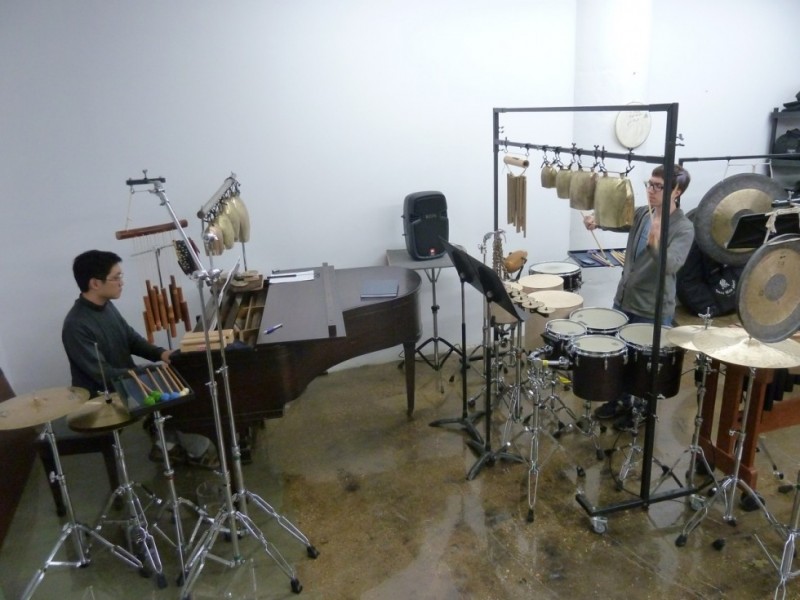Last night, Alex and I rehearsed Stockhausen’s Kontakte for the first time since our performance of it at the Spark festival in Minneapolis last fall. The concert on Friday at the German Consulate New York will be our third outing with the work, a milestone of electroacoustic music which remains mesmerizing a half century after it was written. So much of the learning curve with Kontakte is about memorizing and internalizing the tape part; as each event unfolds in fixed, pre-determined time, we interact with the broad strokes of the tape and its minute, moment-to-moment details, not to mention the other live performer. The rather elegant and ingenious graphic notation that Stockhausen devised to represent his electronics greatly aid the performer’s understanding and memory of the part, and two types of notation – prescriptive for the performer and descriptive for the tape – are thus employed simultaneously. Parallel interactions exist in real-time: those of the performer/tape and the performer/performer. The challenge in relearning the work has been to master both of these dialogues, which require different modes of processing information (perhaps even different parts of the brain!). Sam Pluta will be on hand with the tremendous task of balancing the tape and live parts seamlessly, and also giving us a few essential cues. But for most of the time, it’s up to us to feel what 10.4 seconds of near-silence followed by a huge outburst really sounds and feels like. Our internal clocks have to be running smoothly, because mistake 10.4 for 10.7 and you’ve missed the boat forever.
Another amazing thing about performing this piece, from my point of view, is the vast array of percussion that I get to play. We spent the first hour just getting all the auxiliary instruments set up and working. From indian bells to cymbals to cowbells, woodblocks, and gongs, the pianist for Kontakte has an elaborate setup that extends far beyond just playing on the keys of the piano. It’s a challenge that is incredibly satisfying, as I get to step into the shoes of a percussionist for much of the piece and augment the typical sonorities of the piano.
-Anthony Cheung
Artistic Director, Talea Ensemble

